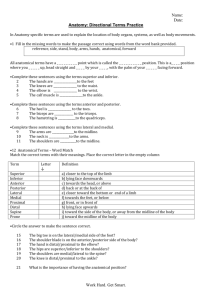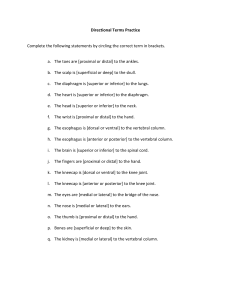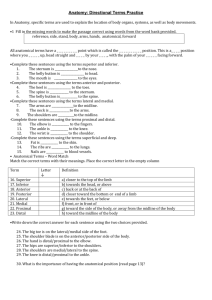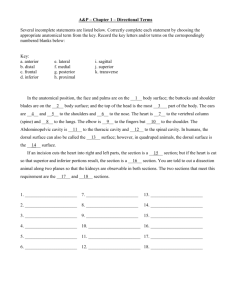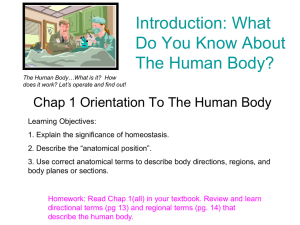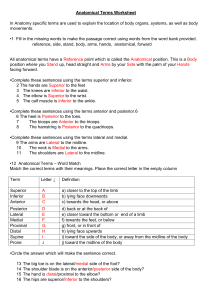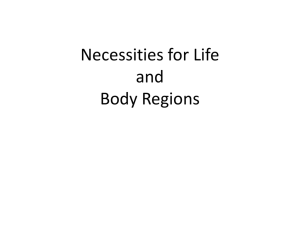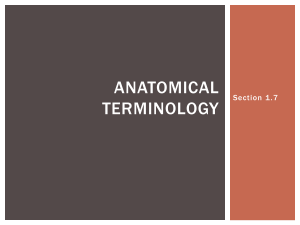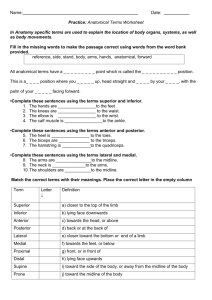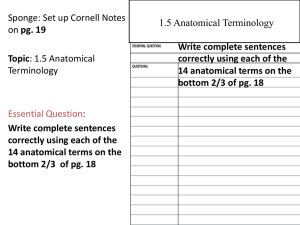Anatomical & Directional Terms Worksheet - A&P Quiz
advertisement
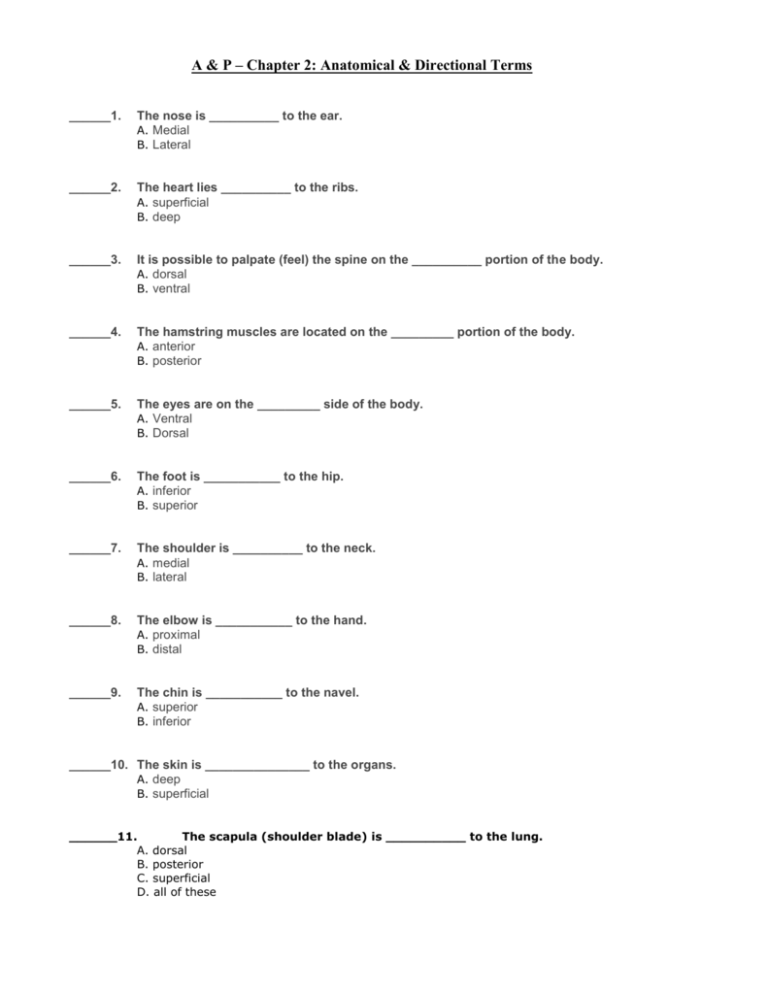
A & P – Chapter 2: Anatomical & Directional Terms ______1. The nose is __________ to the ear. A. Medial B. Lateral ______2. The heart lies __________ to the ribs. A. superficial B. deep ______3. It is possible to palpate (feel) the spine on the __________ portion of the body. A. dorsal B. ventral ______4. The hamstring muscles are located on the _________ portion of the body. A. anterior B. posterior ______5. The eyes are on the _________ side of the body. A. Ventral B. Dorsal ______6. The foot is ___________ to the hip. A. inferior B. superior ______7. The shoulder is __________ to the neck. A. medial B. lateral ______8. The elbow is ___________ to the hand. A. proximal B. distal ______9. The chin is ___________ to the navel. A. superior B. inferior ______10. The skin is _______________ to the organs. A. deep B. superficial ______11. The scapula (shoulder blade) is __________ to the lung. A. dorsal B. posterior C. superficial D. all of these ______12. The elbow is __________ to the wrist. A. distal B. inferior C. lateral D. medial E. proximal ______13. The nose is __________ and __________ to the ears. A. anterior, proximal B. superior, lateral C. inferior, posterior D. anterior, medial E. superficial, medial ______14. A person lying flat on his back is said to be in the __________ position. A. anatomic B. prone C. supine D. A and C ______15. Given the following terms: 1. caudal 2. cephalic 3. distal 4. inferior 5. proximal, which of these directional terms correctly describes the relationship of the ankle to the knee? A. 1,3 B. 1,3,4 C. 2,3,4 D. 3,4 E. 4,5 ______16. Which of these anatomical terms refers to the ankle? A. crural B. femoral C. carpal D. pedal E. tarsal ______17. Which of these anatomical terms refers to the shoulder? A. acromial B. brachial C. cervical D. clavicular E. digital KEY 1. A 2. B 3. A 4. B 5. A 6. A 7. B 8. A 9. A 10. B 11. D 12. E 13. D 14. C (LYING FLAT ON HIS BACK) 15. D 16. E 17. A

